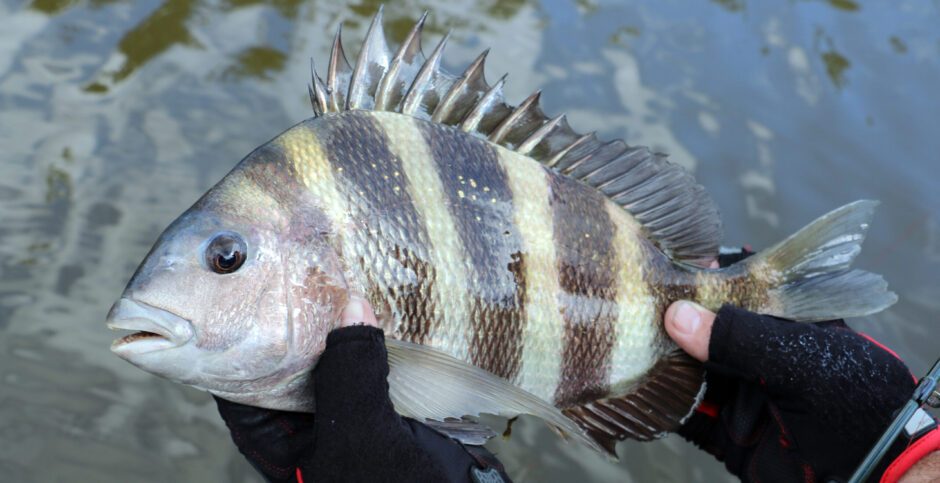The tides play a big role in where the sheepshead will be and when they will be feeding. The tidal changes will almost always provide better fishing, however, sheepshead seem to be one of the few fish that still feed pretty good on a slack tide inshore. If you can find the better fishing spots for sheepshead, you have a good chance to catch them during a slack tide. The height of the water will affect where these fish are found though as the tides change throughout the day.
Fish an Incoming Tide
The incoming tide provides good fishing for sheepshead. If you fish closer to the high tide, there are going to be many more areas to fish as the sheepshead will move into the docks, around bridge pilings and pier pilings as the water levels rise towards high tide levels. The incoming tide is usually the most productive time to fish for sheepshead in the surf and around jetties as well.
Fish an Outgoing Tide
A falling tide can be very productive, especially if you are fishing from the peak of the high tide to the first couple of hours during the falling tide. The high water gives sheepshead a chance to feed on all of the encrusted pilings found around docks, bridges and piers. As the water levels approach low tide, fishing can still be productive on the flats and you can even find some tailing sheepshead mixed in with the tailing redfish.
Fish a High Tide
The high tide is usually the best time to fish for sheepshead, especially when fishing around docks, bridges, piers and in the surf. The barnacle encrusted pilings where most sheepshead can be found offer some excellent fishing in high water. As the water levels rise, the pilings on bridges, docks and piers that hold tons of barnacles will become submerged. Sheepshead move into these areas to feed on the barnacles and they can easily be caught with fiddler crabs and live shrimp. Fishing will also improve around jetties, in the surf and along mangrove-lined shorelines.
Fish a Low Tide
Fishing for sheepshead is usually tougher on a low tide. Sheepshead can be found around docks, bridges and piers feeding on the barnacles that cover the pilings. With low water levels, you will often find some of the most encrusted pilings are now above the water’s surface. Sheepshead will usually move to the deeper water docks or into the deeper water in the nearby channels. Some of the best high water docks, bridges and piers will not produce during the low tides.
Some anglers do have some success fishing for sheepshead on the low tides. They usually target the pilings in deeper water, open water buoys, the channels and sometimes even the flats. Sheepshead can be found in very shallow water while feeding on the flats during a low tide. Redfish are much more prevalent on most flats, but you can find some sheepshead as well.
Fish the Slack Tide
Slack tides usually lead to tough fishing for inshore fish. With sheepshead, the slack tide that occurs at the peak of the high tide can offer some excellent fishing. The slack tide may last anywhere from 30 minutes to several hours depending on the location and the time of year. The bite will usually stay good during this slack tide and then it tends to pick up as the water starts moving out again. Some of the better areas to fish during the high tide are mangrove-lined shorelines, docks, bridges, jetties and piers.


